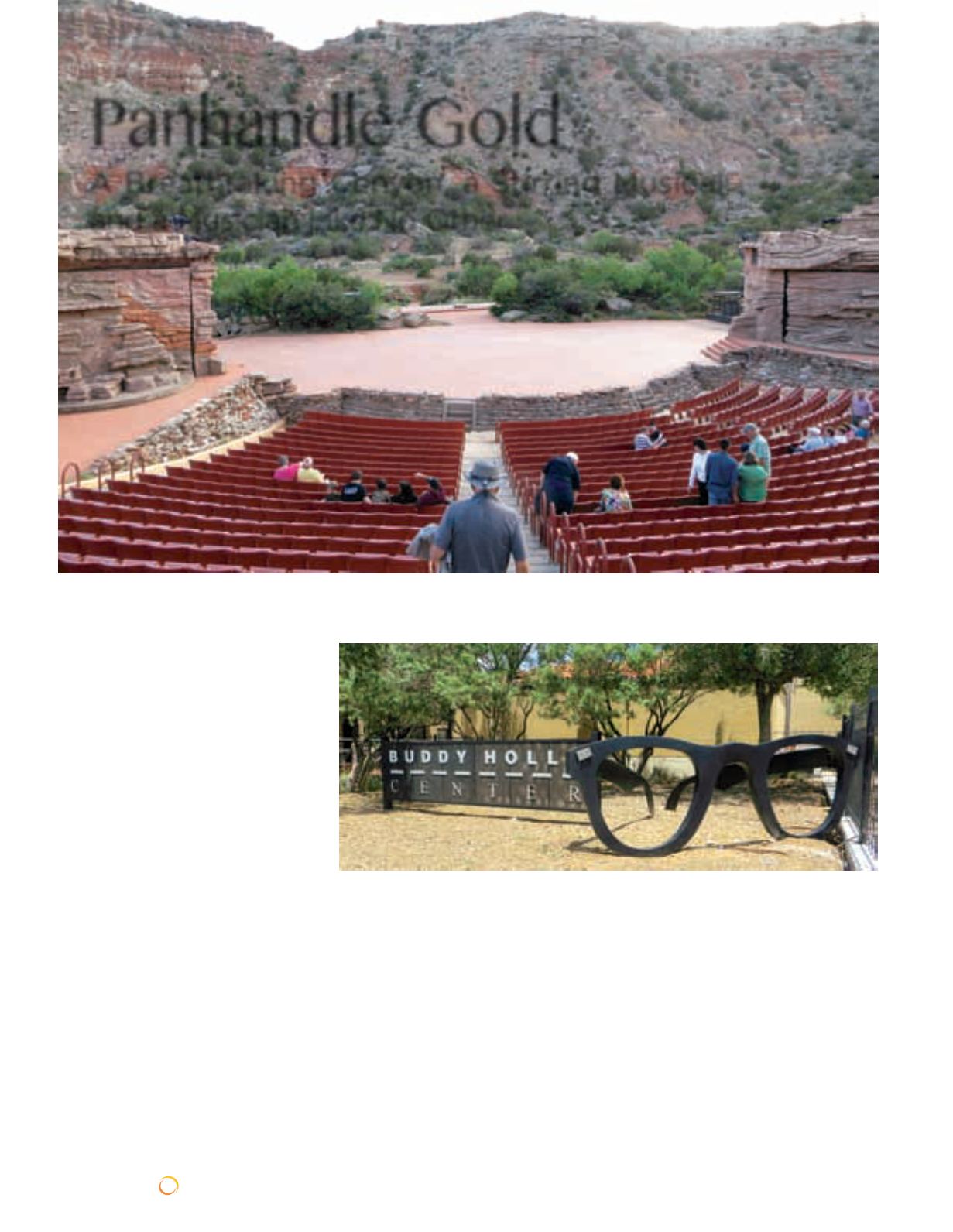
60 | SUNRAYS
NOVEMBER 2013
ONLINE:
SCTXCA.ORG
T
wilight descends over the canyon.
Audiencemembers settle into their
seats in the outdoor amphitheater,
anxious for the show to start. Suddenly,
along the rim of the canyon wall in front
of them, a lone rider appears, carrying
the Texas flag. He kicks his horse into
a gallop across the rim, the flag stream-
ing proudly behind him. As the audience
wipes away a tear or two,
TEXAS
, the
48-season long musical, gets underway.
There are so many highlights of a trip to
the Texas Panhandle area, that it would
be hard to choose just one to share. There
is the magnificent Palo Duro Canyon
itself, drenched in color and in history.
There is the musical that plays most
nights in the Canyon from June through
August. There is the Cadillac Ranch, a
wacky art installation. There is the won-
derful Panhandle and Plains Historical
Museum. And, there is a museum tribute
to Buddy Holly, the rock musician who
paved the way for all the others.
At 476 miles from Georgetown, Ama-
rillo—a good base for exploring the re-
gion—is hardly a day trip. There are
ample hotels available, however, and two
nights should allow you to cover most of
what is described here.
The Palo Duro Canyon is arguably the
biggest draw for visitors. At 120 miles
long, between 6-20 miles wide, and at
times almost 1,000 feet in depth, it is
the second largest canyon in the United
States. The upper part of the canyon was
purchased in 1934 by the State of Texas
and turned into a state park. Its steep
mesa walls and multi-colored layers of
rock provide rewarding vistas for hik-
ing or biking. Another less energetic but
equally enthralling way to see the canyon
is through a jeep tour organized by Elkins
Ranch, a working cattle ranch, owned by
the same family for three generations.
Their staff will take you in open-air,
black-and-white “cow” jeeps along the
rim of the canyon, stopping occasionally
for photos and telling stories about the
geology, ecology and history of the canyon.
Guests learn about the canyon’s role in
one of the last battles of the Red River
War in 1874. Colonel Ranald Mackenzie
was sent to remove a large band of Indi-
ans from the canyon to reservations in
Panhandle Gold
A Breathtaking Canyon; a Stirring Musical;
and a Musician Like No Other
By Sandy Nielsen
At her visit to the Texas Panhandle, Sandy Nielsen watched a production of
TEXAS
at the Pioneer Amphitheater in the Palo
Duro Canyon (above), and visited the Buddy Holly Center in Lubbock (below).


